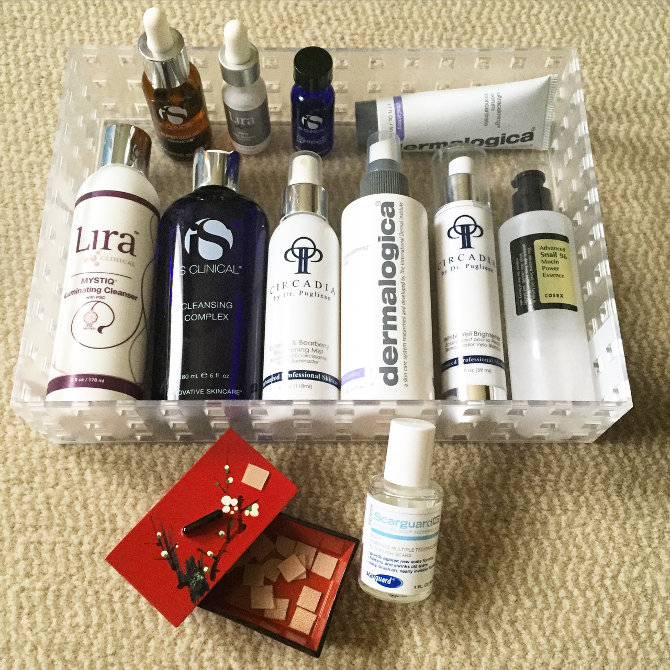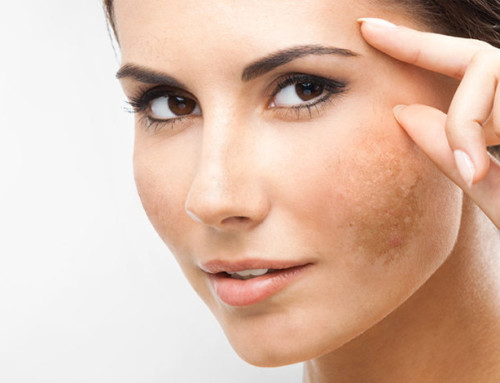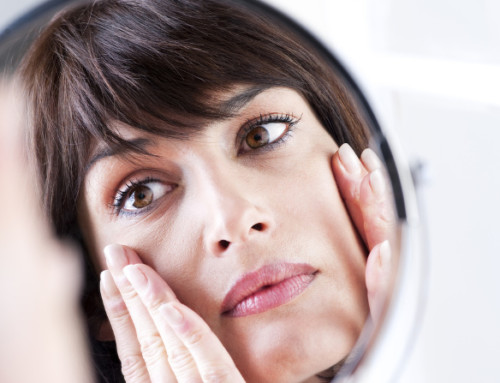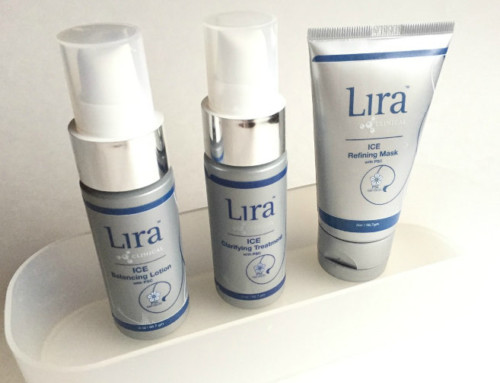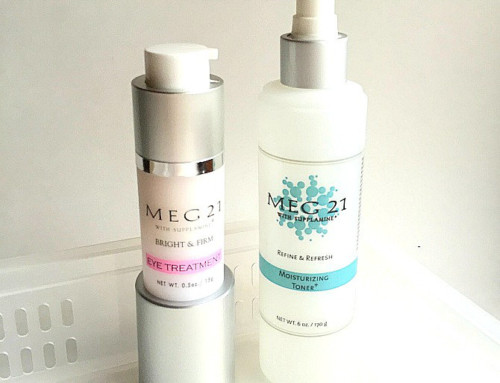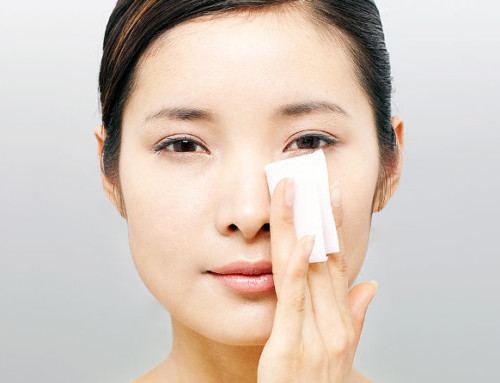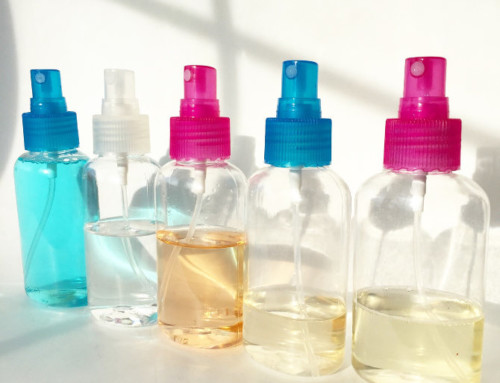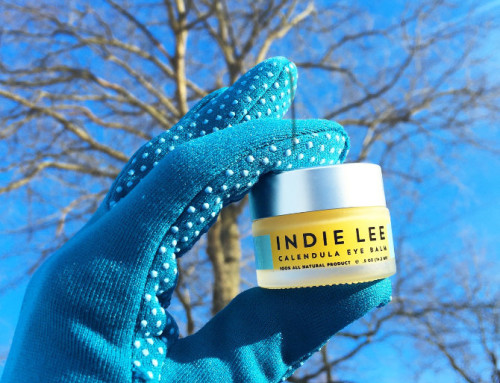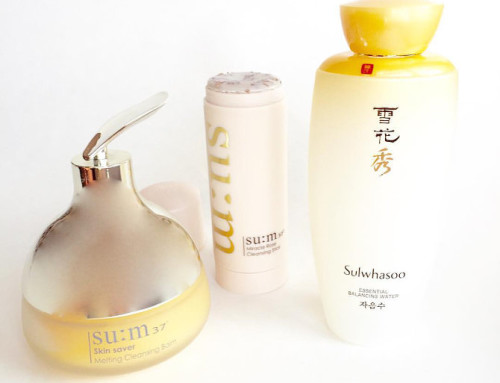Two weeks ago, the Skin Gods decided to put a gigantic cystic pimple on my cheek. They must’ve felt like challenging me, because it has been a challenge to say the least. I call it the runaway pimple because it was enormously inflamed, and it wasn’t easy bringing it down.
I wrote extensively about treating that cyst in my last post. Today, let me show you some of those products for preventing acne scars and dark spots.
The cyst is healing fine. The huge bump has largely subsided and shrunk in height and width. Now there’s just a small dark red spot with a bump. The bump is more obvious through touching than seeing. But it’s still a bump and the skin feels harder there.
The process of healing takes a long time. In the meantime, the spot is still at risk of turning into a permanent dark spot and developing thick scar tissue. I have been extremely careful about managing it, because my skin scars and pigments easily. And I would like the skin to become smooth and flat again.
Post-inflammatory hyperpigmentation (PIH) refers to skin color getting darker as a result of inflammation from trauma to skin. Trauma can be anything, such as a very inflamed pimple, over-aggressive exfoliation, laser or IPL treatment, bug bite, cut, or burn.
Darker skin tones (Fitzpatrick Skin Type 4-6 and even some Fitzpatrick 3’s) are prone to PIH and scarring.
PREVENTING ACNE SCARS AND DARK SPOTS
AM ROUTINE
The most important thing about the daytime routine is preventing UV light from making pigmentation worse. You need to wear sunscreen diligently. Without the sunscreen, all other efforts to brighten a spot will be futile.
Next, you need a brightening serum or treatment and ideally, other products with some brightening activity.
Pigment is formed after a long, complex process in skin, which all starts with a trigger (sunlight or trauma). You can block the pigmentation process at different steps. For example, many ingredients in brightening treatments (e.g. Vitamin C) are tyrosinase inhibitors. They block the activation of the tyrosinase enzyme, which is a key “switch” in this process. Other ingredients block steps before or after.
The more steps you can block, the better. Once melanin is deposited into skin cells, it’s very hard to get rid of completely.
I have incorporated brightening ingredients throughout my routine in order to hinder pigment production to the maximum.
1. Brightening Cleanser: Lira Clinical Mystiq iLuminating Cleanser
- This is a gentle milky cleanser with brightening ingredients. I like to use milky cleansers in the morning at this time of year (winter here on the East Coast). Milky cleansers are mild and non-drying.
- This cleanser is suitable for all but oily and acneic skin types.
2. Brightening Toner: Circadia by Dr. Pugliese Licorice & Bearberry Brightening Mist
- This particular brightening toner is very moisturizing. If you’re dry and craving more moisture, you’ll appreciate this. It is heavier than most other toners. Almost feels like a serum on skin.
- At this time of year, my skin is craving moisture, so this texture is ideal. It’d be too heavy for me on a hot and humid, summer day.
3. Vitamin C Serum – iS Clinical Super Serum
- Super Serum is a potent 15% ascorbic acid serum with extremozymes and a copper growth factor complex. But that’s not why I’m reaching for it now. One of the lesser known things about this serum is its ability to improve the appearance of scars. It improves the collagen re-modeling process while skin is healing, so that collagen fibers are formed more evenly. New skin is smoother and more even, and thick scar tissue is less likely to form.
- Not all of you will form thick scar tissue like me. Many of you who get acne scars will probably get depressions in skin instead (a dimpling effect). This is a loss of the dermal fibers (collagen and elastin) from excessive enzyme activity. My case is the exact opposite – I form excess tissue, which is typical of my skin type. Skin of color is more prone to developing thick scar tissue than Fitz 1-2.
- I would like to caution you on using this serum. While this is a great serum, it is potent and not suitable for every skin type. I can only use this every other day. My skin is too thin for daily use. iS Clinical has an alternative Vitamin C serum, called Pro Heal Serum. It also has 15% ascorbic acid but in a more moisturizing and gentler base.
- Pro Heal is great for long-term use on acneic skin prone to cystic breakouts. It’s also great for anyone who likes their serums thicker and moisturizing. It’s a thicker liquid than Super Serum, which is a thin, loose liquid.
4. Brightening Serum – Lira Clinical Lite Serum
- At this step, I have a range of brightening treatments to choose from, including ones by iS Clinical and Circadia. But my favorite is Lira’s Lite Serum, in terms of how it spreads and feels on my skin. This is just an easy serum to like. It’s very hydrating without feeling sticky, and it gives skin a nice glow.
- It has a great blend of brightening ingredients. The formula is gentle. It can even be used as a post-procedure brightening serum.
5. Brightening Moisturizer – Circadia by Dr. Pugliese White Veil Brightener
- Here too, I have many moisturizer options. But I love the one by Circadia. It’s not too light and not too heavy. Easy to pump out, easy to spread, absorbs beautifully.
- Of course, it’s also a great formula, with a blend of brightening ingredients that are blocking different step of the pigmentation process.
6. Scar Gel – ScarGuard Physicians Formula
- ScarGuard is a silicone gel treatment that you can find online or in doctor’s offices. It is commonly used after a surgical procedure, to keep skin from forming scar tissue.
- Most of you will probably not need it. If you’re like me, you might see this change – skin getting thicker (raised, higher than the rest of skin) and the texture looking funny (tight, stretched out). Scar tissue can easily overtake the initial size of your pimple too – in other words, it can expand wider. So not only are you stuck with raised, thickened skin, but it’s over a wider area too. This happens to me very easily. So I have to aggressively prevent it from forming.
- I brush this treatment (it’s a clear gel) over my scar about 2-3 times a day. It dries fast (in 15 sec). It’s clear (slightly white when totally dry), but not very noticeable at all. It’s easy to peel off, but not so easy that it falls off. And it doesn’t hurt when you peel it off.
- If you’re curious about this treatment, you can read about how I used it to treat a bad 2nd degree burn last year. The treatment was very successful on me, and today you can’t see the scar.
7. Scar Sheet – ScarGuard or drugstore brand
- A scar sheet is another way to suppress scar tissue. Like a scar gel, it is made of silicones. But rather than brushing on a silicone gel over skin, you wear this like a band-aid. It’s like a piece of clear rubber that sticks to your skin.
- The tiny squares in the red box is a scar sheet that I cut up with scissors. This square is about 1 cm x 1 cm, enough to cover my scar spot with some room leftover.
- I stick this over my spot if I know I will be outside in the sun for more than 30 minutes. The whole point of doing this is to block the sun. UV light triggers the formation of pigment. When an acne lesion (or any other wound) is healing, it is hypersensitive to UV light. A scar sheet is better able to block UV light than sunscreen. It’s hard to see in this photo, but the scar sheet is pretty thick. It’s thicker than a band-aid (about 1-2 mm thick). The color is also opaque. No sunlight is getting through this!
- Now, you might be saying, “I can’t be seen with that on my face at work.” Obviously, having a piece of scar sheet on your face will be visible to others. But it’s no different than having a band-aid on your skin. This scar sheet is a nude color, which helps make it less obvious on a skin tone that is Fitz 1-3.
- Personally, I don’t mind being seen with this on my face. First of all, because I don’t care what other people might think. But more importantly, what matters to me is preventing thick scar tissue from forming. I’ll gladly take the temporary inconvenience of a scar sheet over an unattractive scar that stays with me for life. Fortunately, my scar is located on the outer cheek near the ear. My hair partially covers it if I wear it down. If I had many of these spots on my face, putting scar sheet cutouts would not be a practical solution. In that case, I would be extremely vigilant about wearing and re-applying sunscreen and force myself to avoid the sun for the first month.
- Scar sheets are available in drugstores in the first aid section. The brand doesn’t matter. They’re more or less the same.
PM ROUTINE
Below you will see some different products from their AM counterparts. You don’t need to have a different set of products for night. You can use your AM products. That is what most people do. It is also the most economical option.
I have the luxury of having a range of products because I am always assessing different solutions for a range of client skin types. I also have non-reactive, healthy skin, so using different products does not de-stabilize it. If I had sensitive skin, acne, or a skin disorder, I would keep my routine simple. Simple can either mean fewer products, or fewer changes (i.e. the same routine day after day).
Here I am showing you different products for two reasons:
1) To give you more ideas of how a problem can be treated.
2) To show a multi-faceted approach to brightening skin. Different ingredients do different things. My goal is to put a variety of brightening ingredients into my skin, rather than just a few. Again, this goes back to blocking different steps of the pigmentation process.
1. Cleansing Oil – not shown in photo
- I have written extensively about cleansing oils already. Rather than repeat myself, let me just direct you here: Double Cleansing and What To Look For In A Cleansing Oil
- There are many cleansing oils. This is a product category where personal preferences really dictate what you end up liking. There is such a range in scent and how light/heavy an oil feels to you.
- If you’re not picky, then try Dermalogica Precleanse, one of my favorites. It produces a great clean without leaving a residue or the opposite (stripping). It’s easy to rub this over skin, and it has some nice oils that are great for controlling inflammation and acne.
2. AHA/BHA Cleanser – iS Clinical Cleansing Complex
- At night, after a cleansing oil, my second cleanser is an exfoliating cleanser. For the morning, since my skin is not very dirty, all I need is a light cleanse (no exfoliating). At night, my skin is much dirtier. The AHA/BHA cleanser is more useful at this time of day. It also works more efficiently after a cleansing oil has removed the majority of surface debris.
- Again, there are many options here. I like this one because it’s gentle and non-drying. I find many AHA/BHA cleansers too aggressive for my skin. They strip too much and leave my skin feel dried out. My skin is not oily and not breakout-prone, so I don’t need a heavy duty exfoliating cleanser.
- Cleansing Complex uses botanically derived Salicylic Acid (willowbark) and Glycolic Acid (sugar cane extract). It’s a gentle formula in a slightly foaming gel. If you have very problematic acne or are very oily, you may need or prefer a stronger cleanser. But this one is great for the person who gets acne but doesn’t have very oily skin.
3. Calming Toner – Dermalogica UltraCalming Mist
- A great hydrating toner with anti-inflammatory ingredients. Dermalogica makes terrific toners. While there are many toner options, I consistently reach for Dermalogica’s more than any other line.
- Very gentle, soothing, not overwhelming in scent.
4. Brightening Serum – iS Clinical White Lightening Serum
- At night, I switch to a stronger brightening serum, one that exfoliates to get the pigment out of skin faster.
- The pigment (melanin) starts off in the basal layer of skin and makes its up way upward to the stratum corneum. That process takes anywhere from 14 days to 2 months (it depends on your age and the condition of skin).
- Many brightening serums utilize exfoliating ingredients to increase the rate of shedding. That’s one way to treat pigmentation. Of course, you want to inhibit pigment production too (always easier to prevent than correct). That’s what Lira’s Lite Serum in the AM is doing. This one does that too, but with exfoliation added.
- This is a potent exfoliating treatment that should be used at night only, and not in combination with other exfoliating treatments or retinol.
5. Healing Serum – CosRx Snail Mucin Power Essence or Dermalogica UltraCalming Serum Concentrate
- Snail mucous secretions are popular in Korean skincare products. The mucin in snail is hydrating, regenerative, and healing. I don’t often use snail in my routine. Nothing against it, it’s just that I would rather use different ingredients to anti-age my skin on a regular basis. The snail stuff comes out when my skin is feeling raw, irritated, overly dry, or wounded.
- This essence is very viscous, almost gel-like instead of a thin, fluid essence. It’s literally slimey. But since I am using this to treat only a small area of my face, I don’t mind the sliminess. I do mind putting this all over my face though. It’s too sticky for me and doesn’t layer well with my regular products. But when my skin is down, it’s actually a welcome texture. The slightly sticky texture feels protective and soothing.
- CosRx is a Korean brand that you can find online on various Korean beauty websites, and it is priced very affordably.
- If I didn’t have a snail product, I would use Dermalogica UltraCalming Serum Concentrate. It’s one of my favorite soothing serums. A light, elegant fluid that is so gentle yet so effective at calming. It’s easy to use this with other products.
- One note about calming products – you need to try different ones if you have sensitive skin. Many botanically sourced ingredients are problematic for sensitive skin.
6. Brightening Moisturizer – same as the AM or a different one
7. Scar Gel – ScarGuard again
Further Reading:
- Treating A Cyst – A Case Of Hormonal Acne
- How To Treat Hyperpigmentation – A Review Of Brightening Ingredients
- Types of Hyperpigmentation
- Risks for Skin of Color
- Fitzpatrick Skin Types
Don’t miss new posts. Sign up for the monthly email newsletter here: Subscribe.

